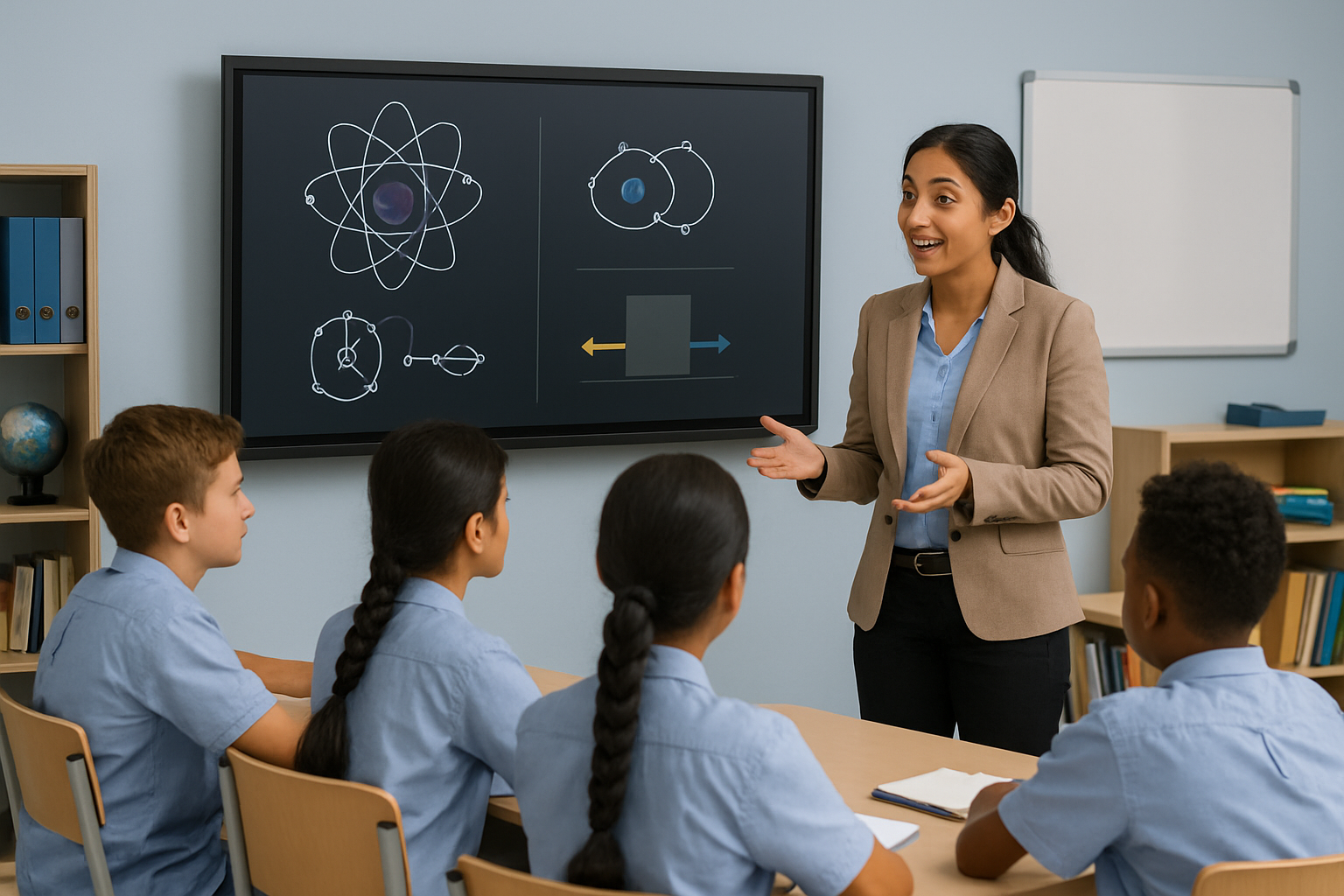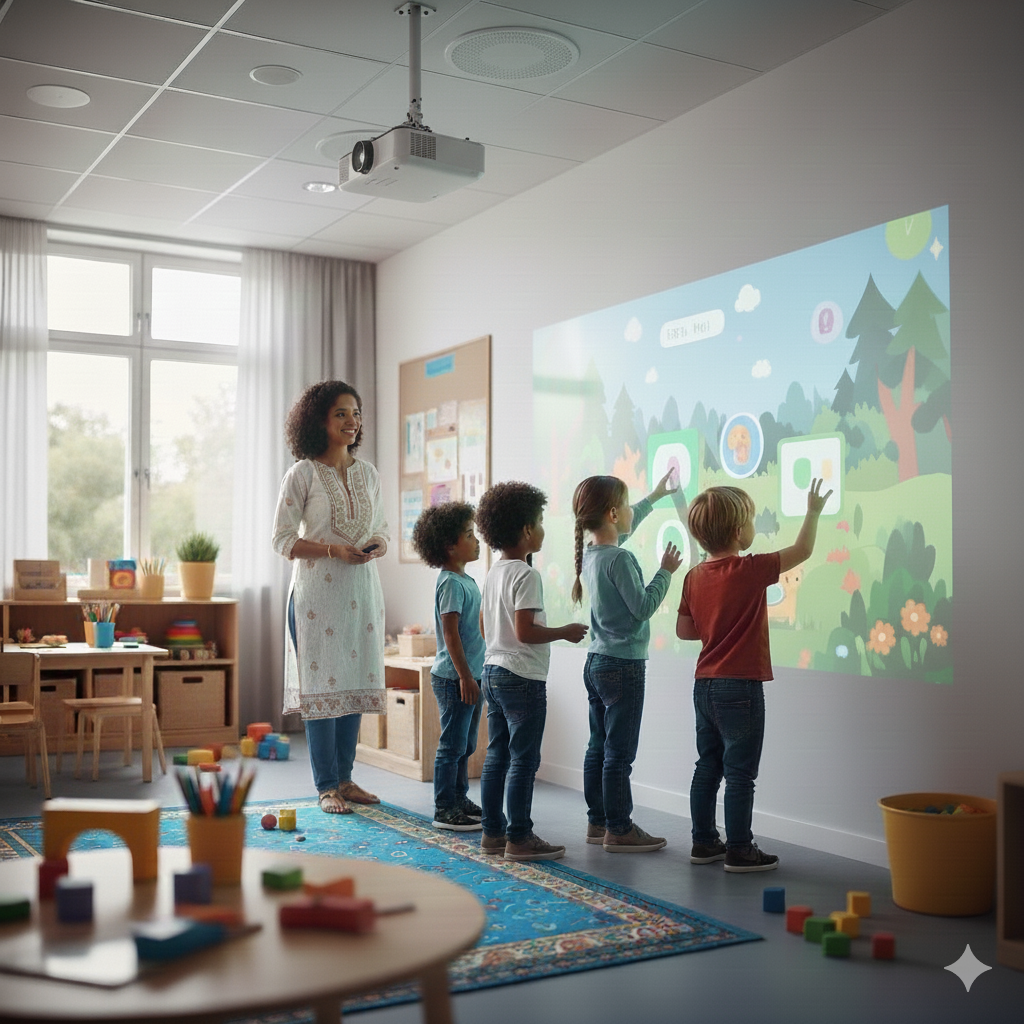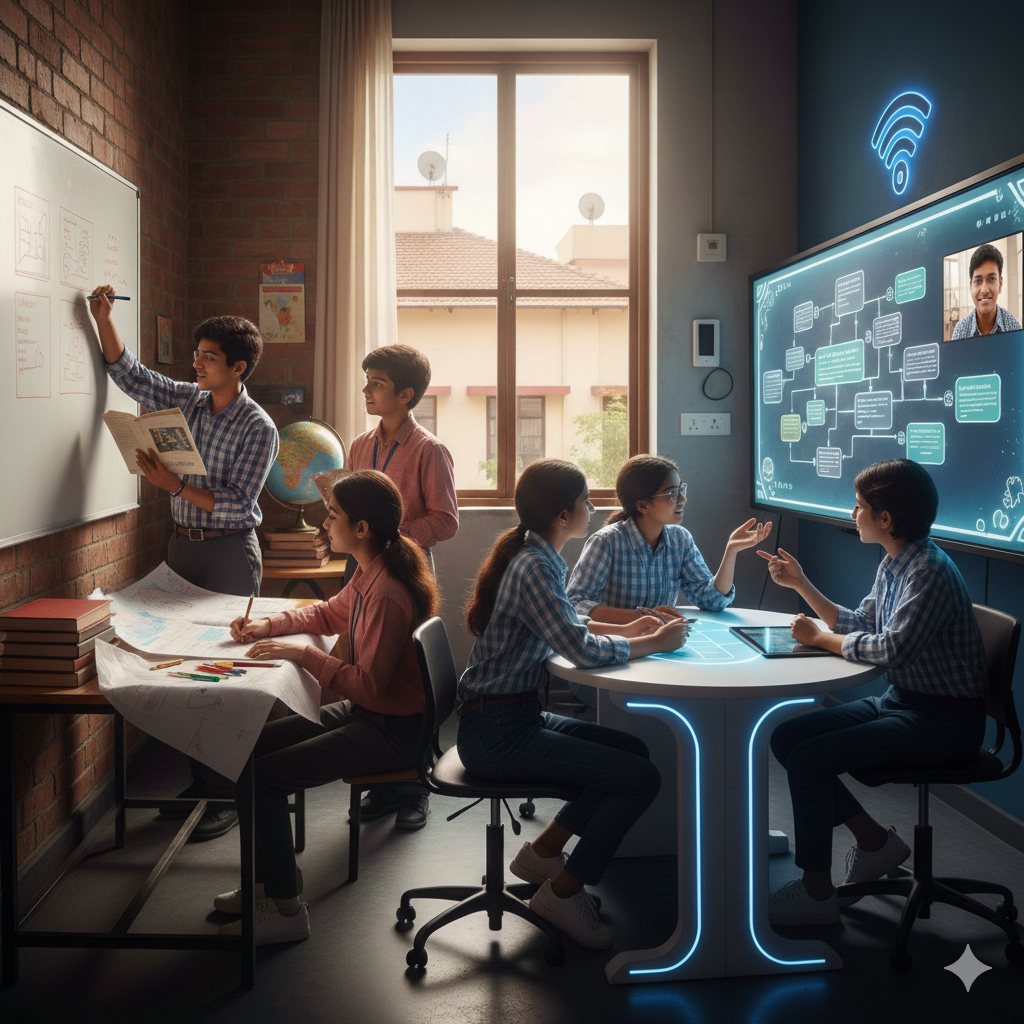How Smart Boards Improve Conceptual Teaching in Class 8–10 Physics & Chemistry

Science isn’t just about formulas on a board. Especially in Classes 8 to 10, physics and chemistry deal with ideas that students can’t always see — like energy transfer, atomic structure, or the path of light rays. That’s where traditional chalk-and-talk methods often fall short.
Today, more Indian schools are rethinking how science is taught. The adoption of smart boards for the classroom, particularly those integrated with interactive panel technology, is reshaping how teachers deliver and how students absorb these abstract topics.
This guide explores how schools can use smart boards to genuinely enhance learning outcomes in science.
Why Conceptual Learning in Science Is Hard in Traditional Classrooms
Explaining invisible forces or chemical bonds using static diagrams on a blackboard often leads to memorization rather than understanding. In large classrooms, many students miss critical steps when teachers have to rush through content. Lab access is limited in many schools, especially rural schools, making hands-on learning even harder.
Moreover, conventional teaching tools can’t replay or scale demonstrations. If a student zones out for a moment during an important reaction explanation, there’s often no way to revisit it.
What Makes Smart Boards for the Classroom Ideal for Grade 8–10 Physics & Chemistry
Smart boards designed for the classroom are no longer just “big touchscreens.” They’re interactive learning environments that allow teachers to bring abstract science concepts to life, in real time.
With interactive panel features like multi-touch, annotation, and simulation tools, a science teacher can demonstrate a law of motion visually rather than just write it. Add in dual-camera setups — like Roombr’s built-in top and front cameras — and teachers can show live experiments even if students are seated far back.
Smart boards also integrate digital content, allowing easy access to simulations, drag-and-drop diagrams, and embedded quizzes. Unlike traditional setups, these sessions can be recorded, stored, and shared with students later. This proves increasingly valuable as hybrid and remote learning become more common.
For schools looking to align with NEP 2020 and NCF 2023 goals — both of which emphasize conceptual clarity, experiential learning, and digital readiness — a smart board for the classroom is a requirement.
Physics Topics That Smart Boards Make Easier to Teach
1. Force and Laws of Motion
Using interactive vectors and animation, teachers can simulate push and pull forces, inertia, and action-reaction pairs. Students can manipulate objects on the screen and see Newton’s laws play out.
2. Sound
Instead of drawing sound waves on the board, teachers can use waveform simulations. With a built-in camera, they can even show how sound causes physical vibrations, like a tuning fork shaking water, in real-time.
3. Work and Energy
Animations showing the conversion of potential energy into kinetic energy, such as a pendulum swing or a falling object, can help students “see” the concept beyond the textbook.
4. Light and Lenses
Ray diagrams often confuse students. Smart boards with touch-enabled annotation make it easy to draw rays, show paths through convex and concave lenses, and trace reflections live.
These aren’t gimmicks. They’re direct, visual reinforcements of what students need to master for board exams.
Chemistry Topics That Benefit From Smart Board Teaching
.jpg)
Source: Freepik
1. Atomic Structure
With 3D models available on many digital board platforms, students can explore electron shells and subatomic particles instead of imagining them. It’s much easier to grasp the periodic trends and atomic behaviors this way.
2. Chemical Reactions
Instead of drawing chemical equations and hoping students understand the sequence, teachers can display animated reactions step-by-step, showing what each molecule does in a visual format.
3. Acids, Bases, and Salts
Interactive pH scales and live demonstrations allow students to connect theory with observation, like watching litmus reactions or pH changes in real-time.
4. Periodic Table
Quizzing tools integrated into the smart board for the classroom can make the periodic table engaging. Teachers can highlight groups, trends, and atomic numbers interactively while tracking student responses.
Smart Board Features That Make This Possible
What turns a display into a digital board for the classroom is what lies beneath the glass. In Roombr’s case, features are designed around actual classroom needs:
- Multi-touch support lets teachers and even students annotate, label, or interact with diagrams directly.
- Preloaded content libraries remove prep pressure from teachers.
- Lecture recording allows for flipped classrooms, catch-up sessions, and better exam prep.
- Dual cameras let teachers switch views between screen content and physical experiments seamlessly.
This isn't just about flashy features. It’s about efficiency, clarity, and flexibility in the science classroom. And when considering the smart board for the classroom, schools need to evaluate not just the display size or OS, but whether the board solves actual classroom bottlenecks. Most panels don’t, Roombr does.
Real-Classroom Implementation Tips
To make the most of a smart board for the classroom, planning matters. Here’s what we’ve seen work in real Indian classrooms:
- Teachers map board-specific tools to each topic (e.g., using animation tools for energy conversion).
- Lessons begin with visual triggers (like simulations) to hook attention before diving into theory.
- MCQs or match-the-column activities on-screen help with formative assessments.
- Session recordings are shared for difficult chapters like “Metals and Non-Metals” or “Magnetic Effects of Current.”
All of this can happen with minimal disruption. Roombr’s plug-and-play design and intuitive interface reduce the friction that often slows down tech adoption in schools.
A Glimpse Into a Roombr Smart Science Class
Picture this: A teacher opens the Periodic Table module. Zooms in on the Alkali Metals group. Animates their reaction with water. Uses the IR pen to highlight trends. Then switches to the front camera to show a real lithium sample reaction. The entire session is recorded and sent to all students for review.
That’s not just a smart board for the classroom, that’s a full teaching system, recording studio, and interactive panel rolled into one.
How Roombr Digital Classroom Supports Subject-Specific Deployment
Roombr doesn’t just ship hardware. For schools serious about STEM, we offer:
- Prebuilt physics and chemistry modules aligned with NCERT
- Onboarding for science faculty to use interactive panel features with ease
- Live support during class hours
- Deep integration of hardware and software for seamless teaching
From topic-based animations to dual-view delivery, Roombr Digital Classroom empowers science educators to teach like never before.
Conclusion
Concept-based learning isn’t optional anymore, especially in science. With the right tools, abstract chapters become clear. Bored students become curious. And teachers get to do what they do best: teach, not troubleshoot.
If you’re looking for a smart board for the classroom that goes beyond the basics and is truly built for Indian education, Roombr offers more than a display. It offers transformation.
Transform Science Learning with a Smart Board Built for Indian Classrooms
Ready to make physics and chemistry more engaging for Classes 8–10? Roombr’s all-in-one smart board for the classroom combines an interactive panel, built-in recording, and live experiment projection—designed for real Indian classrooms.
Click here to book a free digital classroom demo and see how Roombr redefines science teaching with clarity, confidence, and convenience.
Foziya Abuwala
Share
Step Into the future of
Education with Roombr

















